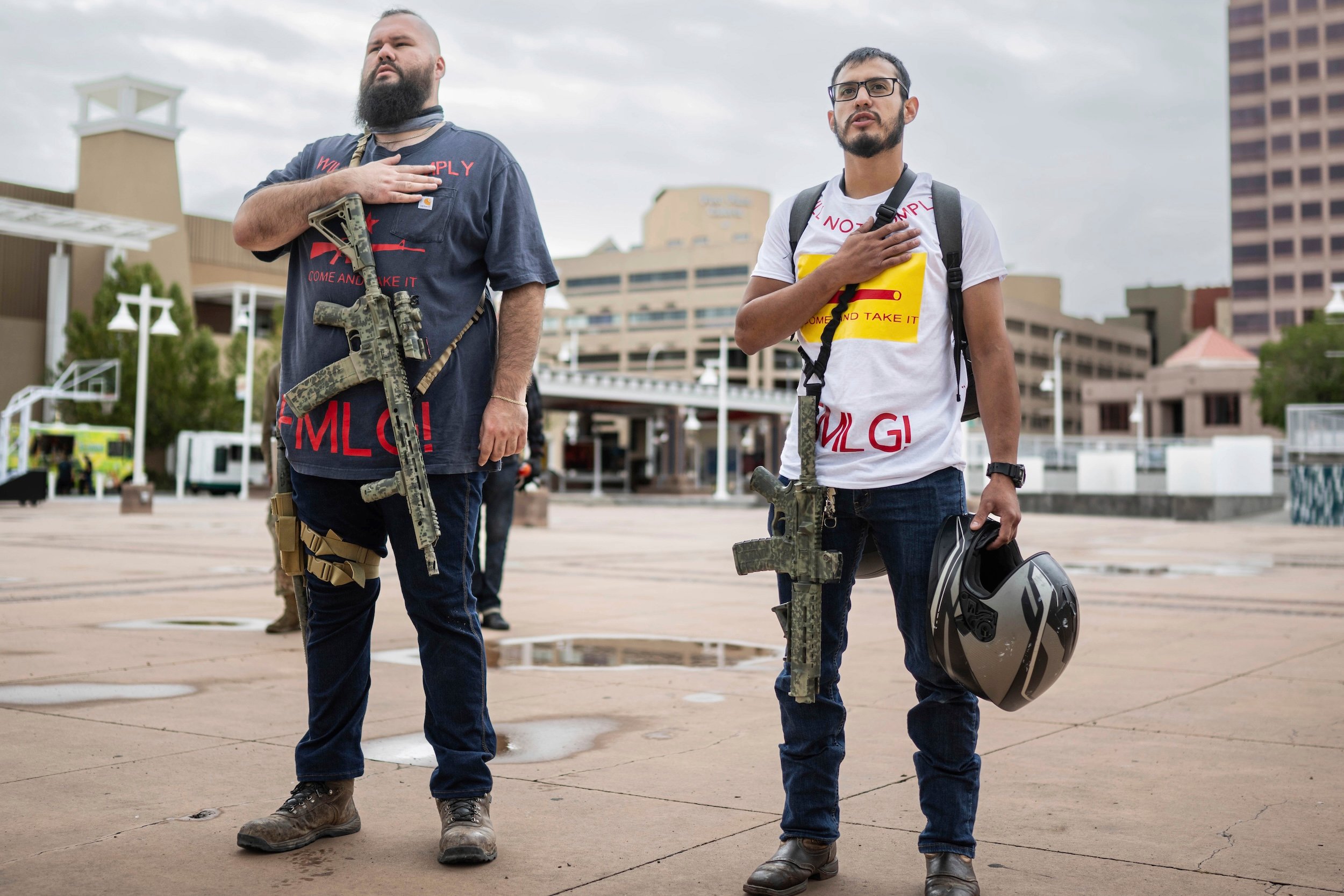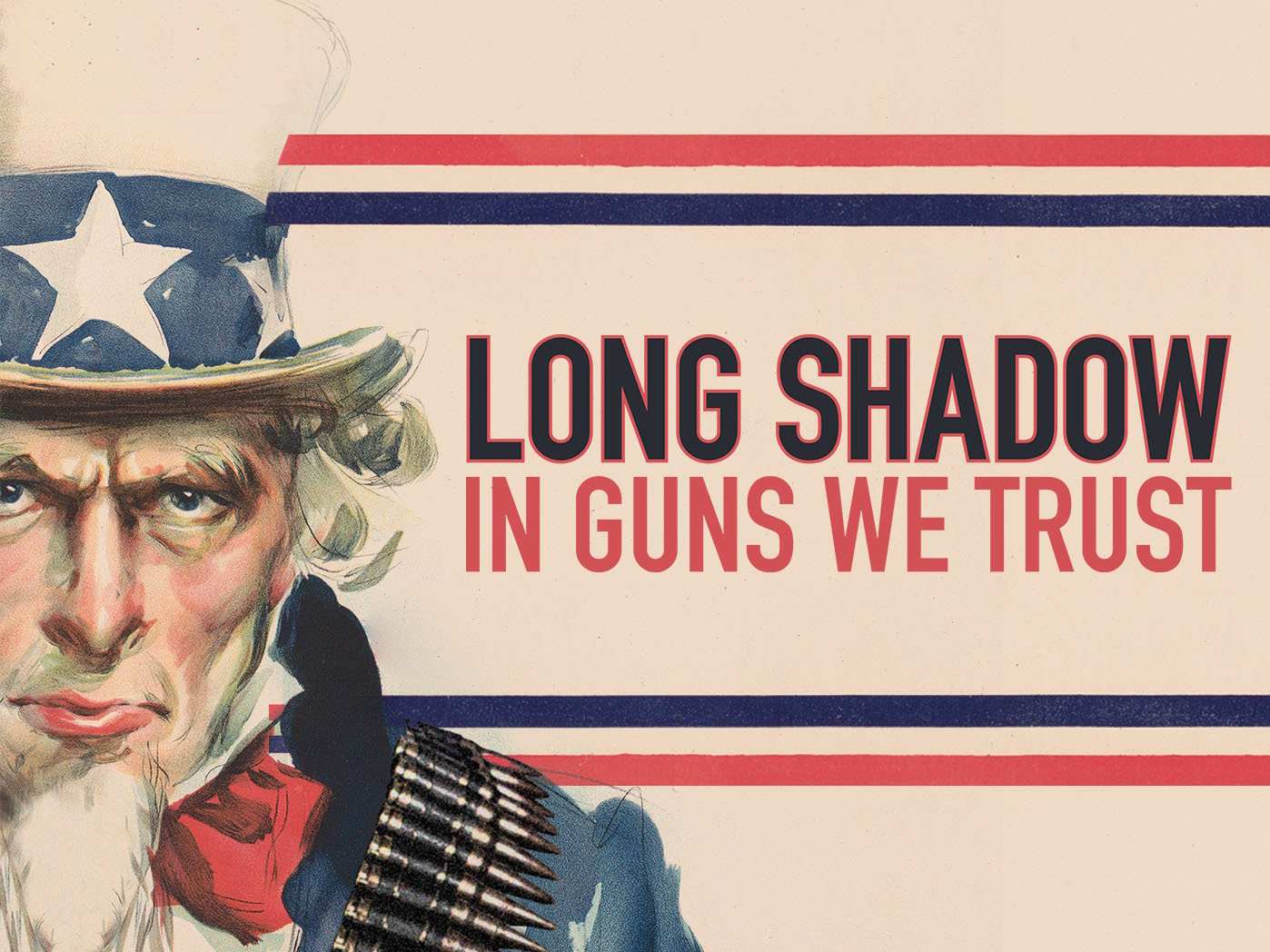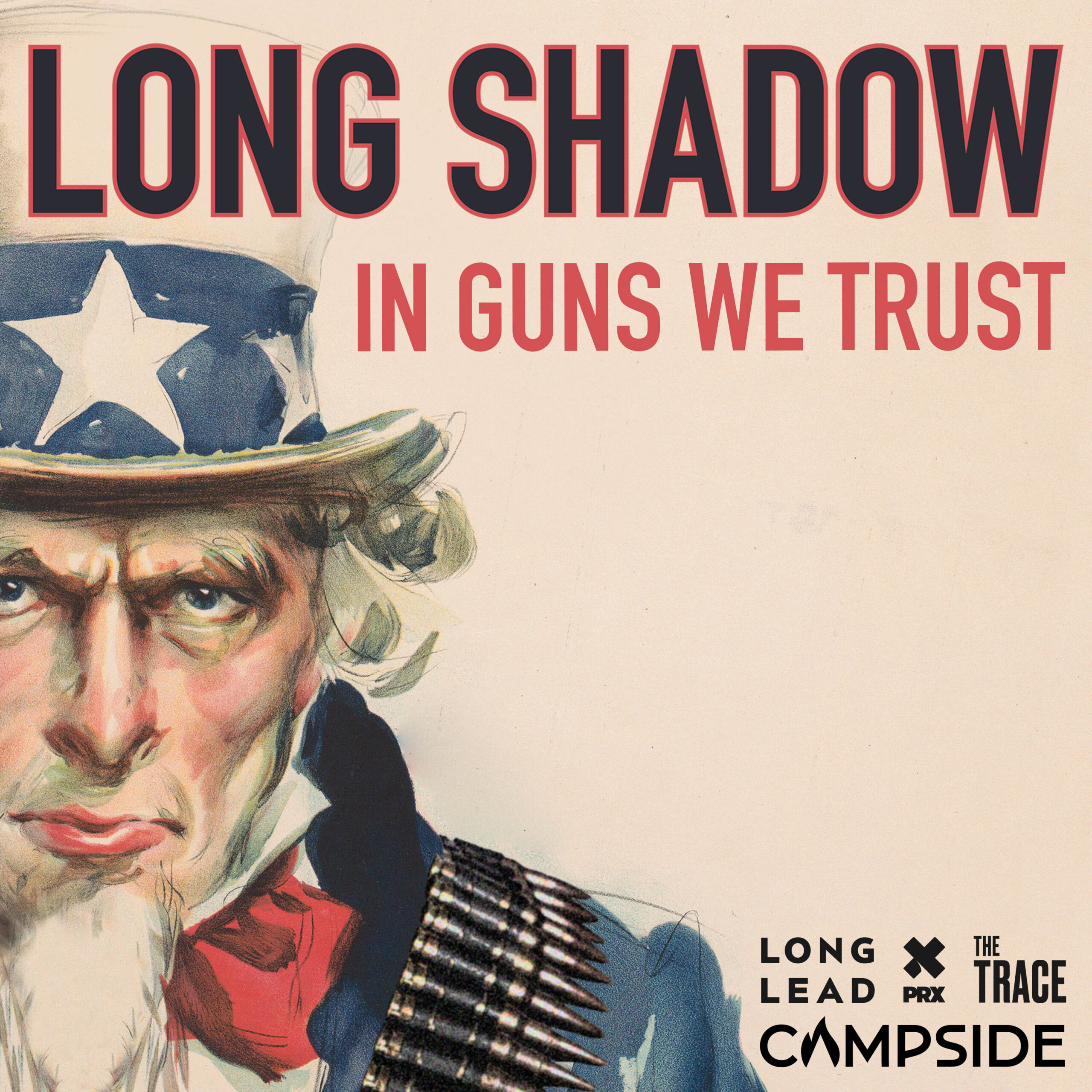You drop your child off at kindergarten where they learn how to hide from an active shooter. You spot a rifle-strapped shopper in the cereal aisle at the supermarket. You stuff your belongings in a clear bag to go to a concert. Your nephew’s high school football game is evacuated when gunshots erupt outside the stadium — again.
These aren’t scenes from a dystopian future. This is America, two-and-a-half decades after a mass shooting at Columbine High School left 13 people dead and a nation reeling.
The April 20, 1999, massacre in Littleton, Colorado, launched us into a new era of school shooting drills and anxiety at large public events. And since then, even though a majority of Americans continue to favor stricter gun laws, barriers to gun access have rapidly eroded in the majority of states.
This month marks 25 years since Columbine. It’s also the starting point for a new podcast, “Long Shadow: In Guns We Trust,” produced by Long Lead and Campside Media in partnership with The Trace, which will examine how the United States became so divided over guns.
Here are some of the ways guns have grown more ubiquitous and changed the way we navigate our lives.
More gun carrying — with less oversight
In 1999, only Vermont allowed residents to carry concealed guns without a permit. But over the past 25 years, 28 states repealed their permit and training requirements. Now a majority of states allow adults to carry concealed guns in public without oversight.
In 2022, the U.S. Supreme Court for the first time endorsed a constitutional right to carry loaded guns in public. Though the decision did not prohibit all state permitting laws, it did block stricter “may-issue” laws that gave state officials discretion to deny permits.
Robert Spitzer, a professor and author who studies gun politics, said the expansion of permitless carry reflects the gun lobby’s efforts to normalize the presence of guns in daily life. “Gun rights organizations and gun manufacturers have one abiding interest, which is to press as many guns into as many hands as possible,” he said. “And that’s what this is all about.”
More gun production
Since Columbine, nearly 245 million new guns have flooded the U.S. market. That is nearly double the number of guns that entered the market in the previous 24 years.
For the latter half of the 20th century, gun production remained consistent, with an average of four million guns manufactured and imported for the domestic market each year.
That changed after the re-election of Barack Obama in 2012, when annual production jumped 72 percent over the year before. Similarly large increases happened between 2015 and 2016 — the year Donald Trump was elected — and the pandemic years of 2020 and 2021, when social unrest prompted Americans to snap up guns in record numbers.
“The messaging has been that you’re not safe and you need to take control of your own personal safety, and one way to do that is to go out and get a gun,” Spitzer said.
More guns at airports
As guns have become more prevalent, and barriers to owning them have eroded, people have increasingly tried to carry them into gun-free zones like airports.
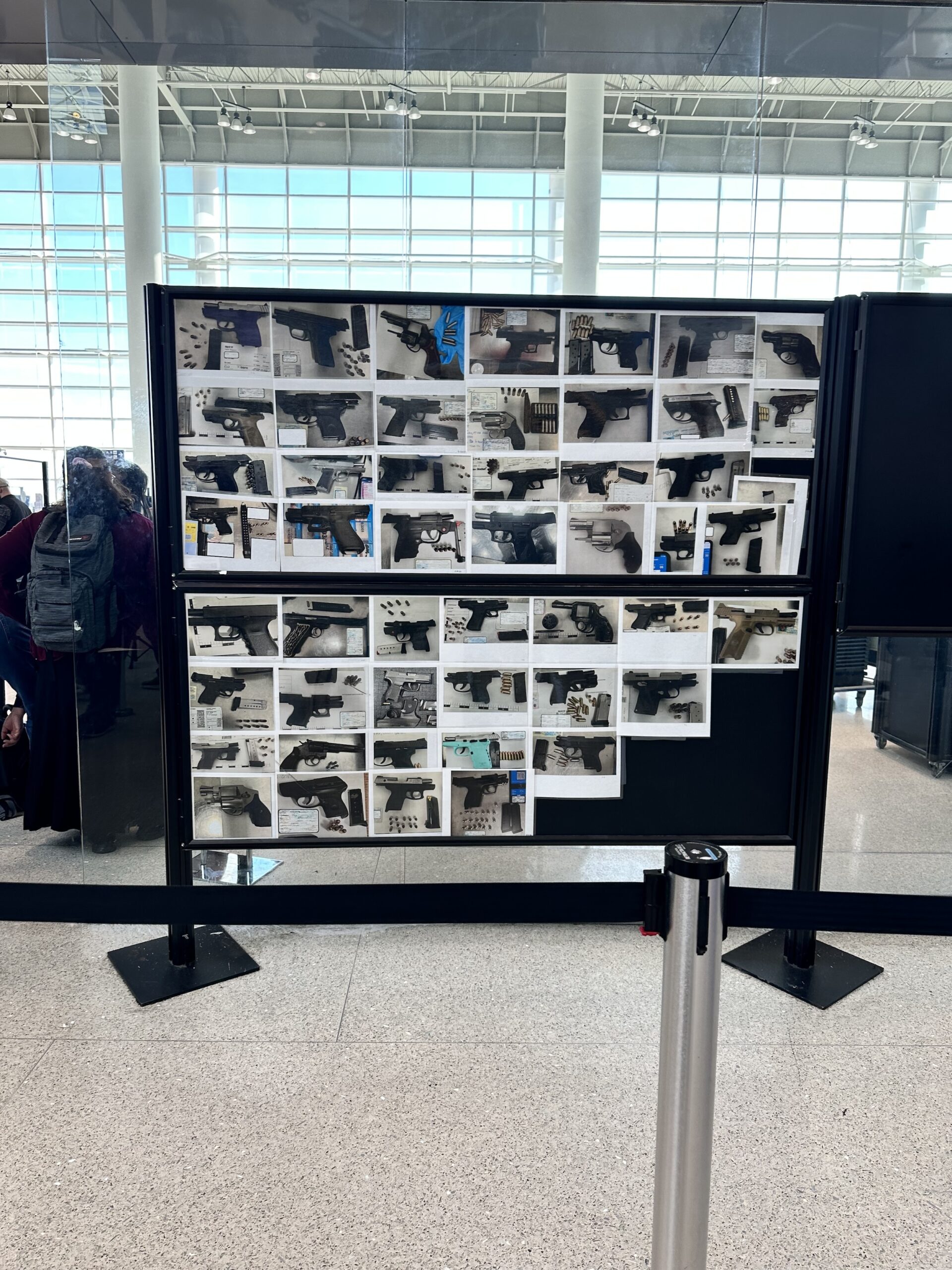
In 2005, the first year the Transportation Security Administration began tracking gun seizures at airports, agents intercepted 660 guns from carry-on bags at security checkpoints nationwide. By 2023, that figure had surged to 6,737 — the most TSA gun seizures on record. That works out to around 18 guns per day. Ninety-three percent of them were loaded.
The number of guns seized at security checkpoints rose at such a rapid rate over the last two decades that the TSA launched an Instagram account to spotlight the problem.
“The majority of people are not doing it with malicious intent,” an aviation security expert told The New York Times in 2022. “They’re simply forgetting.”
When someone is caught at a security checkpoint with a firearm, TSA calls local law enforcement, and it’s up to police whether to arrest the passenger and confiscate the firearm. The TSA imposes a civil penalty of $14,950.
The airports where the most guns were found in carry-on bags last year are located in states with weak gun laws: Hartsfield-Jackson Atlanta International Airport in Georgia (451 guns), Dallas-Fort Worth International Airport in Texas (378 guns), and George Bush Intercontinental Airport in Houston (311 guns).
More guns at schools
Several times a day, a student in America brings a gun to a K-12 school.
More than 1,150 guns were brought to K-12 campuses in the 2022-2023 school year, according to a Washington Post analysis of news reports from last October. That’s a 309 percent increase from the 2015-2016 school year, when 281 guns were found, according to a Trace analysis from June 2016.
Back then, we reported that some of the students carried guns to school to show them off to friends, while others brought them in anticipation of a fight or for protection. Children who have been bullied are nearly twice as likely to carry weapons to school, according to a 2014 study.
Tallies from the National Center for Education Statistics reveal a frightening increase in guns brought to K-12 schools after COVID-19. During the 2021-2022 academic year, which coincided with the pandemic-related gun-sales surge, 4,955 students were caught with a gun at school. That is far more than in any single year in the pre-COVID era.
More school shooting drills and armed staffers
Before Columbine, most schools didn’t employ the types of security measures prevalent in K-12 schools today. But after the shooting, schools began to fortify their campuses. Those efforts intensified after the mass shootings at Virginia Tech in 2007 and Sandy Hook Elementary in 2012.
According to the National Center for Education Statistics, a majority of schools now have security cameras, at least one armed security staffer, an electronic notification system for campuswide emergencies, and an anonymous threat reporting system. Forty percent of schools have silent alarms directly connected to law enforcement.
It’s unclear how many schools held active shooter drills in 1999 because the federal government didn’t collect data on this then. In the 2003-2004 school year, the first year for which data is available, the National Center for Education Statistics reported that 78.5 percent of schools had a written plan “that describes procedures to be performed” in the event of an active shooter. That had risen to 96 percent by the 2019-2020 school year.
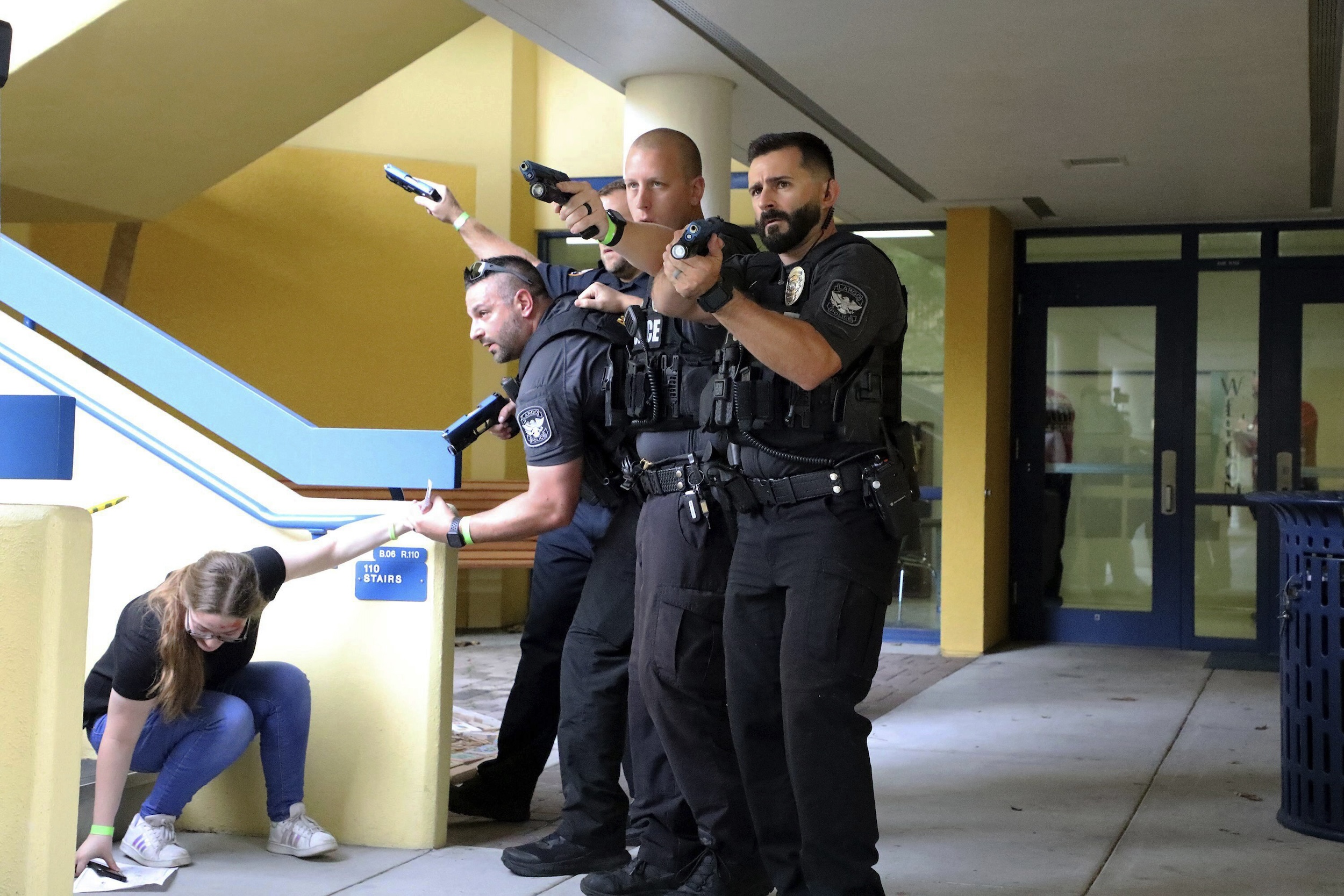
In 2013, a few months after the Sandy Hook massacre, South Dakota became the first state to explicitly allow K-12 school employees to carry guns on campus. The practice has since spread. Today, only 18 states and Washington, D.C., have laws that prohibit school faculty from carrying guns in some or all K-12 schools, according to Giffords Law Center, an organization that advocates tighter gun laws. Most states that allow armed teachers leave the decision up to each school district. Some states allow teachers to be armed only under certain conditions.
More guns on college campuses
Gun carry on college campuses has also expanded in the last 25 years — despite public polling that shows students oppose it.
Twenty-three states — including Alabama, Minnesota, and Pennsylvania — leave campus carry decisions up to each school. Nine other states allow college students to possess guns on campus and prohibit schools from dictating otherwise.
In Texas, whose campus carry law took effect in 2016, faculty members can still ban guns in their offices — but they can’t post “no guns” signs. If they do, they can be fined up to $10,500 a day. University of Texas at Austin professor Matt Valentine wrote in The New Republic in 2019 that the restriction had prompted some faculty members to get creative. One of his colleagues used her doctoral diploma as a target at a gun range and then hung it in her office, “where visitors ask about the bullet holes between the lines of calligraphy — a prompt to discuss her office gun policy, in lieu of an overt sign.”
A group of professors in Georgia unsuccessfully sued to overturn their state’s campus carry law, enacted in 2017. John A. Knox, a geography professor at the University of Georgia and a plaintiff in the suit, told The Trace that it makes him “a little queasy sometimes” walking into a classroom knowing people could be armed. But he’s not concerned for his own safety as much as for the mental well-being of his students, who may be going through breakups and academic pressure and all the struggles that come with young adulthood.
“I thought it was a really bad idea to have lethal weapons in close proximity to anxious and depressed students,” he said. “That remains my biggest concern.” Knox, a gun owner who hails from a gun manufacturing family, said there are also safety concerns: In 2019, a student unintentionally shot himself in the university’s chemistry building. “You don’t really want to have a gun go off in a chemistry lab,” Knox said. “There are pressurized tanks.”
Investigating America’s gun violence crisis
Reader donations help power our non-profit reporting.
More guns at private businesses
Property owners have the right to ban guns in most states. But over the past two decades, Republican state lawmakers have sought to incentivize gun carry in private establishments by passing laws that shield property owners from legal liability if they allow guns in their businesses and someone gets shot. Six states — Arkansas, Idaho, Texas, Oklahoma, Kansas, and Tennessee — have passed such laws over the last 15 years, according to Giffords Law Center.
In addition, more than two dozen states have passed laws requiring business owners to allow customers and employees to keep guns in their cars in the parking lot.
Workplace shootings, meanwhile, have become more common, with a record 78 in 2023, according to the Gun Violence Archive, a nonprofit that tracks shootings through media and police reports. That’s up from an average of 42 per year between 2014 and 2022. Over the past decade, workplace shootings have injured or killed more than 740 people.
More guns in houses of worship
There have been at least 13 high-profile shootings at houses of worship in the past two decades, yet at least 38 states have no laws explicitly barring people from carrying firearms in churches, synagogues, mosques, and other religious institutions.
In 2019, Texas lawmakers passed a bill that explicitly allows concealed-carry license holders to bring their weapons to houses of worship. The law came in response to a 2017 mass shooting at a church in Sutherland Springs, Texas, that killed 26 people. Several other states — including Wyoming, Indiana, Florida, and North Carolina — have passed similar bills.
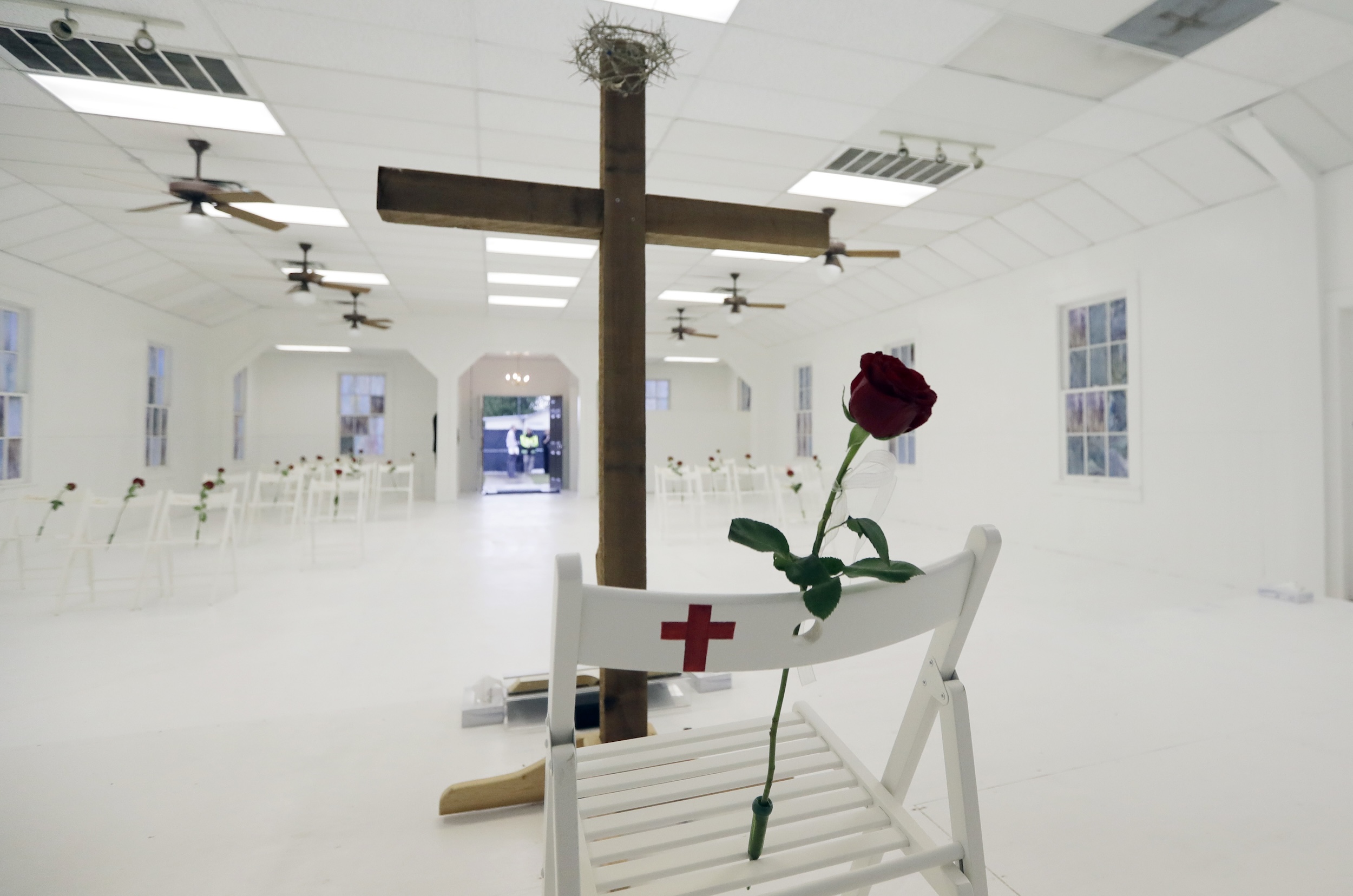
More guns in politics
As guns are becoming more pervasive, the United States is grappling with rising threats of political violence.
Fourteen states allow members of the public to bring guns into state capitol buildings. One of those states is Wisconsin, where in October, a man was arrested twice in one day with a gun demanding to see Governor Tony Evers.
Though some states — like Alabama and California — ban firearms at all public demonstrations and protests, at least 30 states either explicitly allow guns at protests or don’t forbid it.
Meanwhile, most states have no laws prohibiting people from bringing firearms to polling places and ballot drop boxes. While guns at polling sites have not been a widespread issue in past elections, incidents have happened. In 2020, two men, one wearing a holstered handgun, filmed voters as they dropped off their ballots in Arapahoe County, Colorado. The voters told county officials they felt threatened, but law enforcement said the men were not breaking the law.
